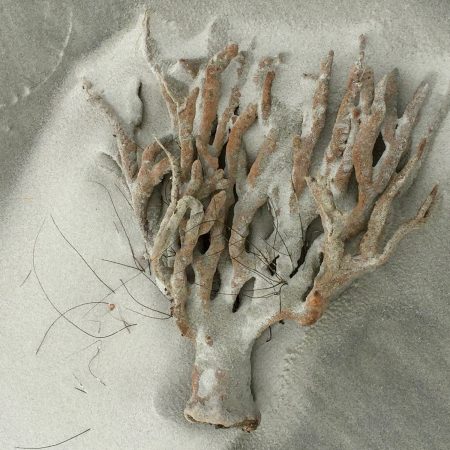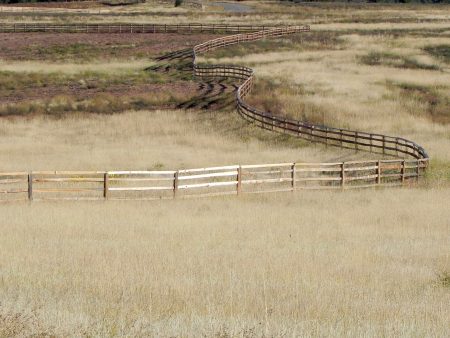Ann Segal hasn’t done an ad for the iPhone camera, but—if it weren’t for her decision a long time ago to walk away from the commercial side of photography—she could. For the last 10 years of a 45 year career of taking photographs, she has exclusively used her iPhone, with remarkable success. In a professional arc that started with street photography and moved through photographs of jazz musicians, a range of commercial work, wedding photographs, portraits, and various other assignments, she now focuses on travel and nature photographs (flowers and food), chiefly to please herself. She has also done a series of videos of “Conversations with Photographers” (collaborating with videographer Scott Ginn) that feature some of the Cincinnati area’s leading photographers, including Helen Adams, Jymi Bolden, Robert Flischel, Anita Douthat, and Cal Kowal. For the 2018 FotoFocus, she says that she chose to create an additional video: “With my 70th birthday coming up, I decided to turn the camera on myself.” This year’s video features Segal’s own life and work in what she thinks of as a “mini-retrospective,” culled by Segal and Ginn from several hundreds of possible images to play in the background of her interview.
Like a great many young people of her generation, she started taking pictures with a Kodak Brownie, a gift from her grandfather. She links her interest in taking photography to another level to having around the house while growing up the publication from the Museum of Modern Art’s famous (and now more problematic and possibly even notorious) photography exhibition The Family of Man, curated by Edward Steichen in 1955, “which I looked at over and over and over.” Her interest in photography took shape as she started to take courses in Art History at the University of Wisconsin, which she calls the “first compelling study I undertook.” She encountered there the work of some of the figures she thinks of now as her influences: Imogen Cunningham and Georgia O’Keeffe (from whom, perhaps, she got an interest in the abstract and lyrical structures of natural objects), Kandinsky and Gerhard Richter (from whom, perhaps, she acquired an interest in the spiritual and other unconventional uses of color). After moving to the San Francisco area, Segal took a series of workshops from such photographers as Deanne Delbridge and Irene Young, and worked with Rod Dresser, a photographer who had been one of Ansel Adams’s assistants. Though her time with Dresser was spent in marketing, which she didn’t much enjoy, perhaps this time gave her a link to some of the artistic practice that is deeply entwined with a mythos about America that foregrounds the ways that nature’s grandeur speaks to the inner being.
Segal also lists Diane Arbus as one of her crucial influences, despite the very substantial differences in their choices of subject matter. Arbus represents an alternative reading of the mythos of America and its artistic destinies in the mind-20th century, one that foregrounds those who are situated outside of the cultural consensus. From Arbus, Segal may have gotten her early attraction to street photography, the first genre to which she committed herself: on the streets, Segal explains, “I saw compelling images that I had never seen in my sheltered Cincinnati life.” Where Arbus sought out the extraordinary and the grotesque, over the years, Segal has chosen to focus on what she calls “a lot of ordinary things.” Now that she no longer does commercial work, she tends to concentrate on clouds, flowers, and food—things that don’t last. It is another way to approach the question of the decisive moment after walking away from her earlier attraction to street photography. The sheer impermanence of things makes them beautiful and precious.

Segal also photographs when she travels, and she travels a lot. She recounts people asking her whether she’s going to be working on photography when she travels, and she says that she responds, “Yes, I’m going to take pictures. I’m also going to breathe.” Though travel pictures can sometimes seem to belong to a fraught genre these days (with its complicated relationship to otherness), Segal does not seek out the conventionally exotic. Her work may seem casual, though she tells a story about spending three days on a California beach making photograph after photograph of a certain type of seaweed that had washed ashore, looking somewhere between a floral specimen and coiled wreckage at a construction site (with perhaps a hint of the skeletal).
As a digital photographer, there is a significant amount of data management that comes with her art. She explained that after she comes home from a trip, she has to set aside time to organize her work. “After I’ve done some laundry and paid some bills,…I devote some time to looking at my pictures before I get too distracted.” It may take a weekend to get things in order. (Both question and answer take into account the overall FotoFocus 2018’s interest in archives.) Her work habits may be intense, but the finished products are often disarming at first glance. A lot of her work is taken at a distance from her subject; in some ways, she treasures the space between the audience’s point of view and the tree line or cliff face out there. She is just far enough away for shapes to resolve themselves. She photographs as a witness, not a thrill-seeker. Though she says “I immerse myself” in her subject matter at hand, there is also something sociable about her work in faraway places. It is as if we were walking along a trail with someone who really pays attention to what she sees and wants us to see it too.

Segal argues that there is a meditative dimension to her work; she is on a spiritual quest, and hopes to help others with theirs. Though I do not find her work placid, I can see ways in which her photographs are both calm and calming. There is a sense of geometry to her work that is appealing; things very rarely seem precarious. Landscapes in particular seem drawn effortlessly into a sensual logic; hills and roads become curves and swirls. A fence line seems drawn upon the grassy landscape with elegance and grace; it hardly seems an imposition. A view of supports from underneath an ocean pier carries one away from oneself with no sense of loss. Her visual world is hardly ever crowded. Things are cushioned by the space that surrounds them, which has both a spiritual dimension and an aesthetic one.
I felt this even in her close-ups, which are among the most startling pictures she’s produced. Though her camera may only be an eyelash away from the fruit or flower she’s photographing, she seeks to illuminate, not to disorient. She describes her relationship to the things she allows to fill her frame as “intimate.” But she still preserves the distance that allows the true shapes of things to become visible. This gives a sculptural quality to her still lifes. In a wonderful picture of a pomegranate stem, we peek into the calyx as if we were looking down a well. But there before our eyes are still more lovely and delicate shapes, the curls of the stamen cluster, a series of surprises. I asked Segal if she used some sort of close up attachment to make her iPhone more suitable to her work, and she said No: “I just zoom in like everybody else, and I hold it very, very still.”

As with all excellent photographers (or any other artist for that matter), questions about technique reveal important issues about content. Sitting down in the Mini Microcinema to wait for her video to begin, the person sitting next to me wondered aloud about what’s gained and what’s lost from Segal’s working only in a square format in her recent work. I actually hadn’t noticed. There is a substantial history of square format photography including the high end Hasselblad (which Segal had used until she found “it was too cumbersome for me”). I asked Segal about her choice, since the iPhone’s default format is rectangular and it is even able to take panoramic views, and she replied that it ended up giving you a “more intimate image” with “no extra space.” It seemed connected as well to her decision against cropping her photographs. The debate between cropping and full-frame is a long and honorable one, but for Segal, it is practically existential: “I see things as I see things,” and she does not want her pictures to betray her vision. Above all, her fidelity is to composition, and the uncropped square is an homage to her discipline. It would not be true to say that color was an afterthought, but the essence of a photograph for her is its form. As for the colors, she explained, “I tweak things.” Sometimes, she went on, “Things have to be lightened up….That’s my prerogative.” It sounds as casual as a hair rinse.
“I like to shoot beauty,” Segal observes in her video and for the last several years or more, she has been very successful at that, with a mixture of intensity and ease. “I like to let things wash over me,” she adds, suggesting both the immensity of her subject matter in nature, and her view of herself as someone who does not have to behave intrusively or willfully towards the beauty to which she is drawn. In the end, this enables her to fulfill her artistic and spiritual purpose in her work: to allow others, by seeing her work, to “connect to their own inner landscapes,” and to see in her pictures, as she does herself, “their memories, their yearnings.”